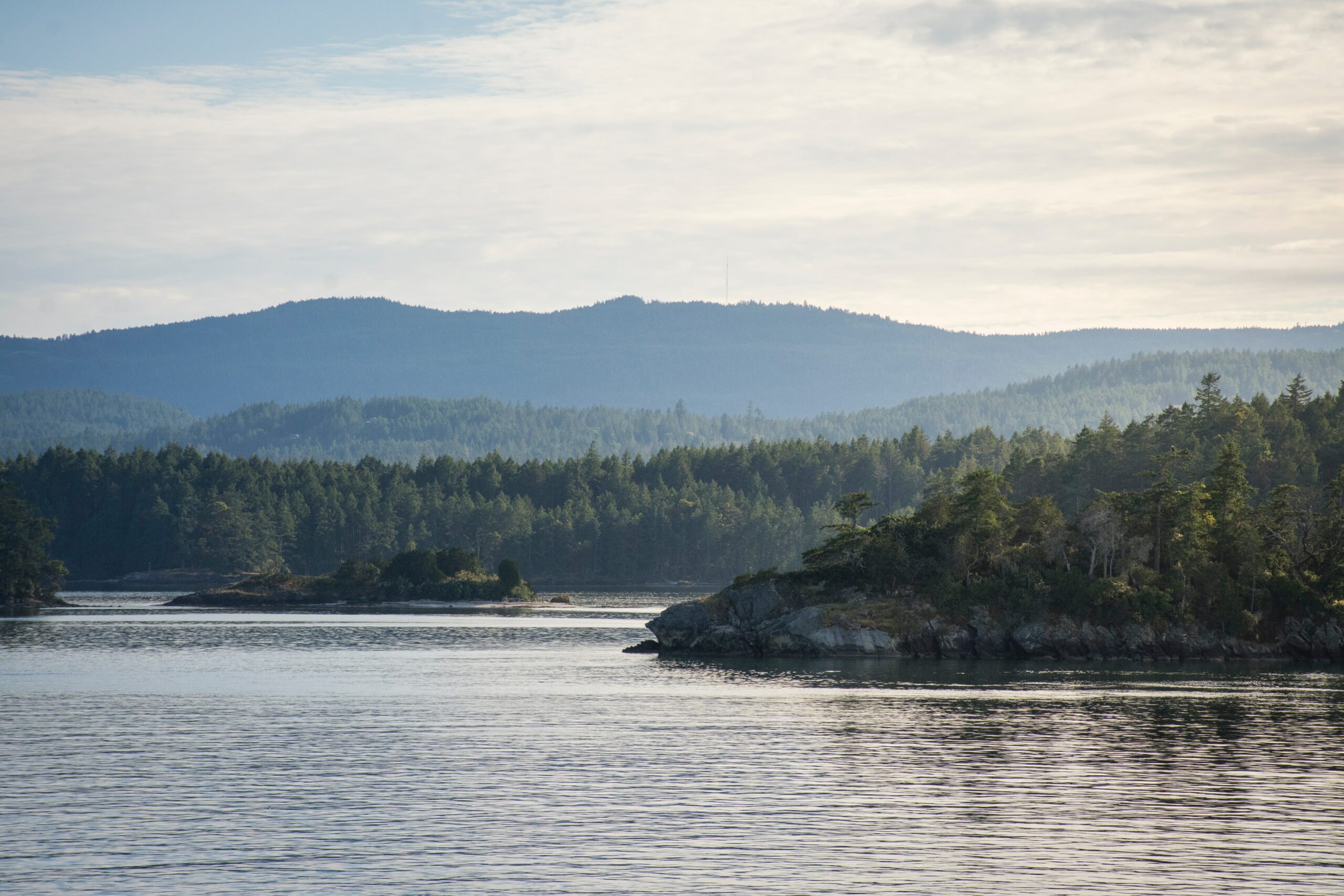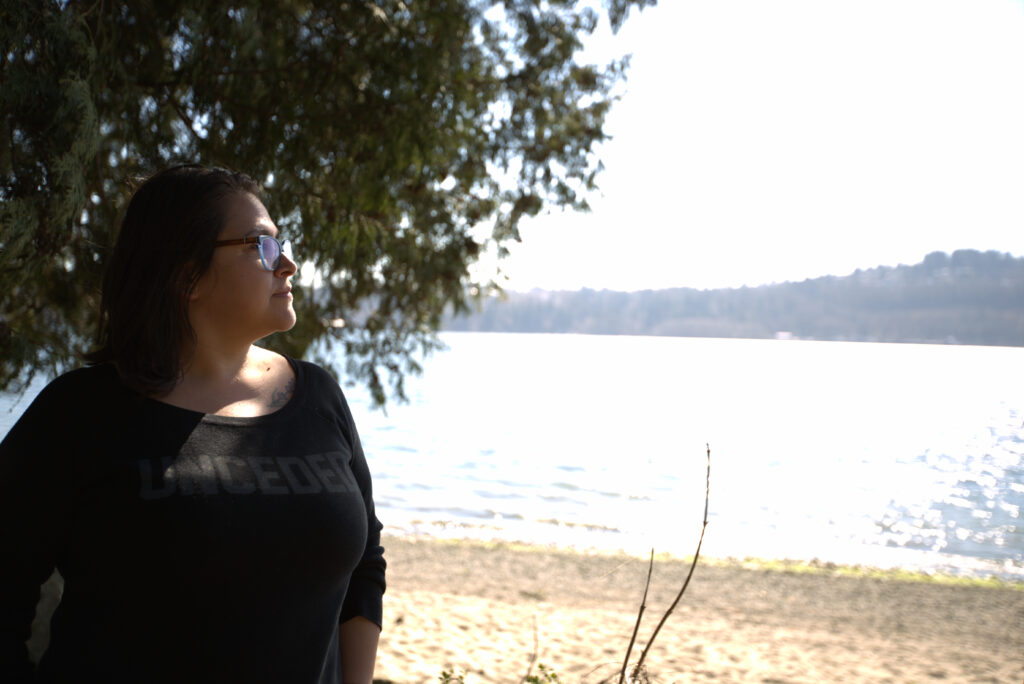Karen Rose Thomas (KRT): So mostly what I find are referred to as debitage. It's the pieces of stone that are created when toolmaker is making a tool.
Science World (SW): That's archaeologist Karen Rose Thomas.
KRT: So, they're like the discard, the leftover flakes. But my mom has this uncanny ability to discover cobalt blue trade beads and they would have been traded to my ancestors by the Europeans in the early 1800s.
SW: For as long as she can remember, Karen has combed the shores of Tseil-Waututh territory with her mother.
KRT: To me now as an anthropologist and archaeologist, I'm fascinated by the connections because prior to contact my ancestors would have made beads of their own but they would have been much more labour intensive. And so, the culture of adornment and the trade beads that they received from settlers would have been so exciting to them I just imagine.
SW: When Karen began studying archaeology in university, she learned that her and her mother’s gathering of debitage and trade beads is an archaeological survey technique called “surface collection.” She also learned that surface collection has different uses depending on who you ask.
KRT: When you're doing a structured archaeological excavation, everything has a provenience— like a place in time—and you can measure that time and you can measure the associated data. But with a surface collection or a surface-collected object, that context is missing. And so, I saw the excitement from my mom and from other community collectors who have this connection to an object that was made by someone in our past, like an ancestor or cultural connection. And then I would just see archaeologists sort of being dismissive of it. Like, “Oh, well, it's a surface collection. It lacks context.”
SW: As an undergraduate honors student in archaeology, Karen's thesis challenged this assumption.
KRT: I saw it as an act of stewardship, right? So, the tides are washing these archaeological deposits away and if those objects weren't collected, they would just be washed out into the sea and into the mud flats and lost forever. We’re stewards of the environment, of the lands and waters, but also of the archaeology of the past, of this connection to the ancestors.
SW: The more Karen learned about the science of archaeology, the more she saw its potential to help bring stories of the past into the present.
KRT: So many different kinds of sciences work together in the field of archaeology and all of these sciences work together with Indigenous folks to learn about the ancestral communities. It can reveal things that are hidden. So, you know, we understand our ancestors were here and we know a lot about them from the knowledge that's passed down through the generations but it's like science can accentuate. And so I used geology as a tool to explore the geochemical properties of one type of rock that my ancestors made tools out of.
SW: Today, Karen works with a team of environmental, scientific, business, and cultural experts with the Tsleil-Waututh Nation performing archaeological assessments and investigations for local land developers.
KRT: My day-to-day job consists of sort of putting on our thinking hats. It’s doing research and ethnographic research and previous archaeological work around the neighborhood research, combined with post-contact historical research, and what we know about landforms and land use and, you know, First Nations traditional knowledge and sort of incorporating that all into lens that we view the landscape with.
SW: A lot of Karen's job entails educating folks on the collective responsibility to be stewards of the land and of our present connection to the past.
KRT: You know, Indigenous history is ongoing. We're still present and with United Nations Declaration of the Rights of Indigenous People and the Truth and Reconciliation Calls to Action, there is a lot that settler developers are responsible for but maybe don't know the full extent of.
SW: Karen is also a university instructor. She describes a moment with her first-year anthropology students when she realized but none of them was studying to become an archaeologist and that many of them were studying to become engineers.
KRT: And I was kind of discouraged at first when I realized that like there was there was no junior archaeologist that I could really like appeal to. But then I thought longer and deeper about it and I saw it for the possibility, like the potential, to just sort of change that narrative before it became a conversation in the future. Or maybe the conversation would be different because these engineers are taking with them an understanding? And, you know, if they work in an area with Indigenous archaeology, it's a dozen less engineers that will need it explained to them. They'll just, they will be advocates. They will go out into the world and they will understand that the landscape we currently live in is one that has been lived in for thousands of years.

